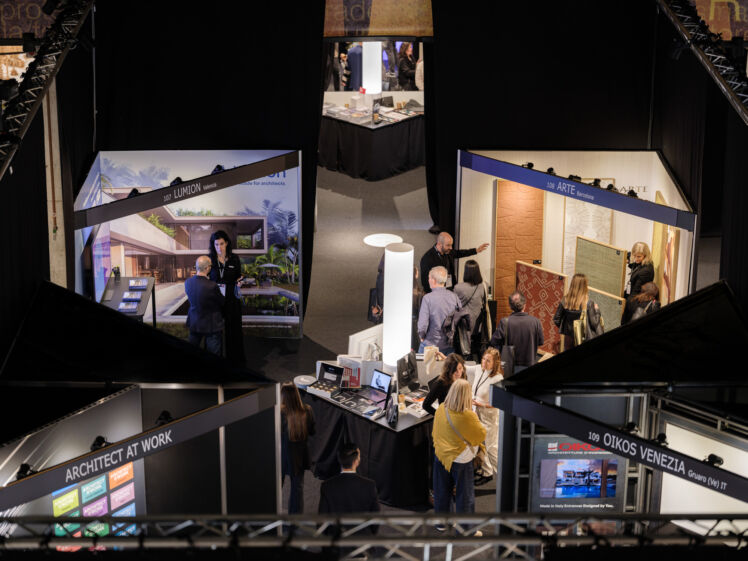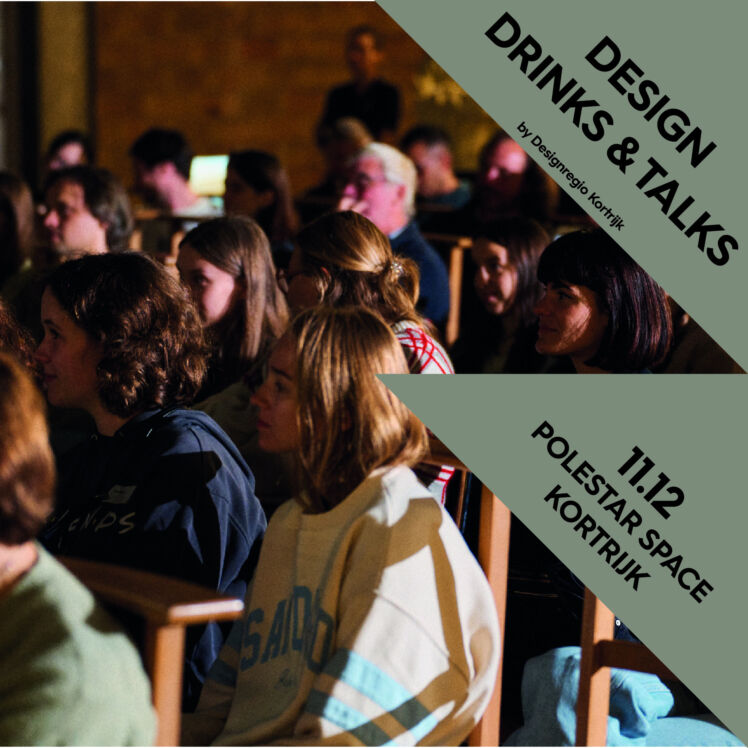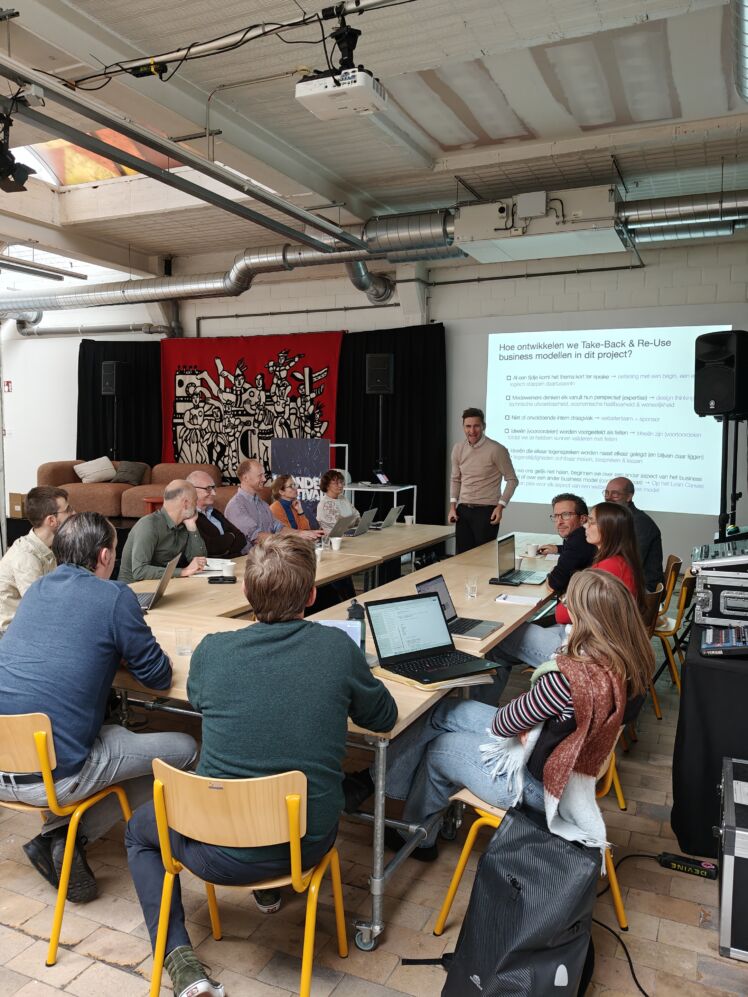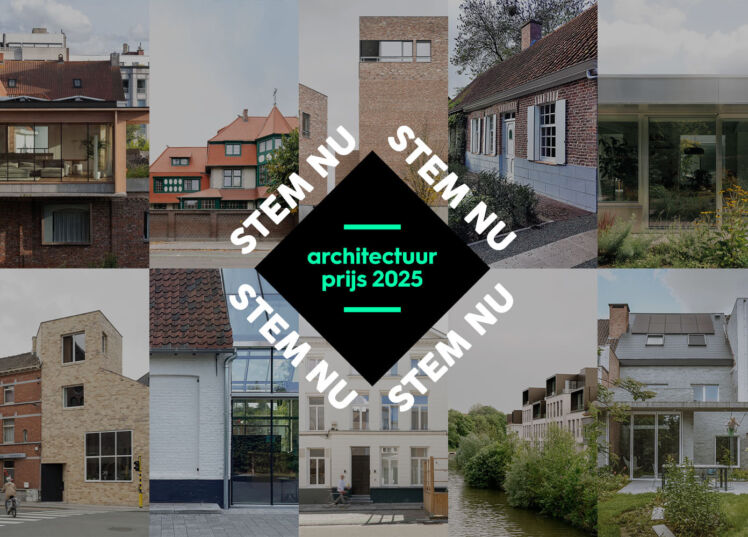
Sweet Spot Design
Applying design thinking actively in your company brings an enormous boost to business activities. As an entrepreneur, you dare to think like a designer. But what does that mean exactly? It is not a far-fetched idea. On the contrary! Sometimes it seems so obvious, and yet it is so relevant. In this "Sweet Spot Design" publication, entrepreneur Thierry Vanderefven (Belberry Preserves) and design thinking experts Remco Lenstra (Antwerp Management School), Valentijn Destoop (Little Miss Robot), Guy Van Wijmeersch (Barco) testify with very concrete examples on how a company can grow by thinking like a designer.
While reading, become part of a round table conversation. Take a chair - or even better - design and make one and join the table. And the photos of the West Flemish entrepreneurs who are already working on this show that this is the way forward. Here, you get tools for defining problems and solutions, for engaging designers, for clearly formulating assignments and for testing new earning models in the market. Bon appetit!
Read the article about SWEET SPOT DESIGN here.
Client: Designregio Kortrijk
Author: Tim F. Van der Mensbrugghe
Photography : Pieter D'Hoop
This publication was realised with the support of EFRO Flanders.
SWEET SPOT DESIGN
For decades, designers were only allowed to come out of their corner when new technology required fancy packaging. In the last ten years or so, companies have discovered that they can reinvent themselves if they start thinking like a designer. And design thinking does not stop at companies and governments. "Sustainability will be the next yard for design thinking."
Thierry Vandererfven puts three cardboard bars on the table in his office. Each one is a different colour: bright red, lemon yellow and stately beige. Each bar is about twelve centimetres long and has the shape of a solid gold bar. What the bars contain makes the eyes of every foodie twinkle. "This is our new concept", grins Thierry, beaming with pride.
The bars on the table are Terrines Gourmandes of grain mustard, of wild lemon and of red onion and raspberry. "You can use them to finish desserts, starters and even main courses."
Thierry is CEO of Belberry Preserves, a Kortrijk-based company known as far afield as Japan for its jams and other fruity delicacies. Belberry also supplies ingredients to industrial clients, including Natural Pack from Oostkamp, a company that makes the finishing coat that protects pâtés from drying out. "At some point they wondered if they couldn't extend that product to the end user," says Thierry. "They had the idea of gelling our raw materials, i.e. putting them into a solid form." Natural Pack could have safely kept that idea to itself, except that the company does not make a consumer product and has no end users. "Our strength is just our brand and our distribution channel," says Thierry. "We export to forty countries in the deli segment. So we developed the idea together and the terrines are now being marketed under the wings of the Belberry brand."
When Thierry talks about the development of the terrines gourmandes, he does not use the term 'design thinking', but his story is strikingly similar to one of the type examples of what design thinking is capable of: the rise of Nespresso. "The case study on Nespresso is the most downloaded of all time", says Remco Lenstra of the Antwerp Management School. The Kortrijk satellite office from which he works is known for its expertise in design thinking. "Nespresso was a supplier of coffee machines to offices. One day they came up with a new product: a machine combined with an aluminium pod.
They had the knowledge of coffee and machines for years, but a new combination of that knowledge opened up a whole new market. They controlled the distribution channels themselves and had the coffee machines made by five manufacturers, so that the price remained low. Coffee per cup was still relatively new to individuals at that time. Together with Senseo, Nespresso had understood very well how coffee is consumed."
You might wonder what a bar of grain mustard has to do with design. You can see the link with a glitzy Nespresso machine, but Nespresso's example is not about the design of the coffee machines either. "It's more about a business model", says Remco. "Nespresso made the difference with a new combination of building blocks it already had. The point of design thinking is not to make your products look as aesthetically pleasing as possible, but to get a company and its employees to think like a designer. "Design thinking helps companies to develop new products, but also to change themselves and their internal processes," says Remco, who is himself trained as a product developer. "Design thinking starts with qualitative understanding of a problem and then offers a solution through a design process."
So where does this design thinking come from all of a sudden? Valentijn Destoop, who helps organisations make design thinking their own, refers to the book Sprint: How to Solve Big Problems and Test New Ideas in Just Five Days (2016) by Jake Knapp. In it, the designer explains how Google approaches a design sprint. "The design sprint is a five-day process in which participants seek a solution to an open problem statement," says Valentine. "That could be a bank wondering what its next product should be or a hospital wondering if it should make an app. On the first day you try to understand things. You question experts and you look at the market. On the second day, you come up with concepts and start sketching things creatively. On the third day, you decide what works and what doesn't. On the fourth day, you build a prototype - whether a classical model or a graphical interface does not matter. On the fifth day, you invite people and ask them what they think."
Valentine calls Jake Knapp's book one of the key moments for design thinking. "The fact that a valuable and serious company like Google embraced design sprints was a boost. Design sprints already existed, but Google made the idea their own and standardised the method." Companies and organisations that embrace design sprints find that they suddenly save time. "In the past, some companies would spend weeks or even months making something tangible, with such a sprint you already have a solution in a week's time," says Valentijn.
However, design thinking is more than design sprints. "You can do a sprint during the process of design thinking, but you can't squeeze design thinking into a sprint or a workshop," Remco notes. "Originally, design thinking was developed as a human-centred story: we look at what the customer wants. That is logical, because design thinking originated with a design agency and designers always look at things from the customer's perspective. Their added value is not their technological background, but that they understand the user."
Design thinking existed before Jake Knapp's book appeared. Valentine experienced the evolution himself. When he started working as a graphic designer, design was still part of the Marketing and Communication department. "But I felt a tremendous curiosity about the world outside. How does a sector work? How does it work?"
It was 2008. While the credit crunch was in full swing, Apple's iPhone was forcing its global breakthrough. And Valentine founded his first company: Little Miss Robot, which focused on digital product design. This is so much more than web design, it's about how digital products provide answers to human needs. As Little Miss Robot grew, the design industry changed. "Over the past decade, interest in designers' methods has been growing," says Valentine. "Companies started to look at the users of their products in an empathic way. In the digital world, these users investigate themselves and consciously choose a product and a user experience." This evolution caused a major shift in the marketing landscape and brought opportunities for design companies. "For example, what we now call design thinking grew out of the classic design techniques," says Valentijn. "This is a very specific process in which you look at a lot of solutions and then find the best solution."
"By training I am a design thinker, if I can call it that," smiles Guy Van Wijmeersch. He graduated as a product designer and is now the
He graduated as a product designer and is now the Director Innovation & Design Thinking at Barco. When he started working for the Kortrijk-based technology company in the late nineties, nobody had ever heard of design thinking. Guy saw the movement take shape with his own eyes, while working for Barco in the US and Germany. He worked together with, among others, Tim Brown of Ideo, one of the founders of design thinking. "Tim showed that you can apply design in a very different way than what was done before," says Guy. "His book Change By Design (2009) was the tipping point at which design thinking emerged. The movement was already there, but in his book, he crystallised the whole concept. It was like he opened a box and showed what process goes on in the mind of a designer."
So what makes the mind of a designer so different? "Design wires your brain in a different way," says Guy. "You have an eye for aesthetics, but you also want to understand why things happen, why people fall for something. That is also a matter of empathy: I have to know the client better than he knows himself. A good designer never immediately carries out what a customer asks. First, he leans back and asks himself: why is this customer asking me that and what is his problem? Only after you have identified the problem and gained insight do you start developing solutions. Complex situations have many layers and a good designer connects all those layers and offers a solution from there. Tim's book revealed that principle."
"The classic systems thinking - investigate and analyse something, draw a conclusion and formulate an answer - doesn't always work anymore," says Valentine. "So you optimise what you are already doing, without innovating or coming up with new solutions. Why can design thinking offer good solutions? Because you combine different skills. You sit down with people from different walks of life and still arrive at a solution." That multidisciplinary approach is one of the key features of design thinking. There is a conscious strategy behind it.
Tim Brown summarises it by drawing three circles that partly overlap: feasibility, viability and desirability. In Dutch, this sounds a little less sexy: feasibility, viability, desirability. "There must be a human need, something must be technically possible and there must be a viable business model," explains Remco. "If you have those three things, you are in the sweet spot where the circles cross. Design thinking is about the integration of those three elements. You have to perfectly align what is technically possible with what is economically viable and what is desirable."
Intuitively, Thierry Vandererfven is completely on that track. "I am a product developer, marketer and foodie," he says. "As a consumer, you are first seduced by the outside and if the inside is also good, you say: wow! My favourite olive oil is not only very tasty, the bottle itself is a work of art. The whole picture has to be right: both the product and the packaging. The brochures we distribute at trade fairs must also radiate emotion. Buyers have to feel it, so that they want to sell our products."
Guy takes his biros, pulls off the cap and puts it back on. There is a pleasant click. "How that cap clicks, that's an experience and that's important," he says. "Or take the sound of the door of a car: it reassures people that they are safe. Hence the evolution from product design to user experience design: a product is not just a tangible thing." He cites the example of the iPod. "Before the iPod, there were mp3 players on the market," he says. "Behind many devices were engineers who turned their marketing story into something very technical. Steve Jobs appealed to the desirability: '10,000 songs in your pocket!' He was talking about the total experience. Ten thousand songs in your pocket was already a first desire and then they were also in a beautiful device that you could easily operate."
"What Apple understood very well is that the experience is the deciding factor," says Remco. "The click wheel created the whole experience of the iPod. This created something emotional between the user and the product. Developing a good product is not only about finding a solution to a functional problem, but also about a meaningful contact. That is the raison d'être for a device. If you don't have an emotional attachment to your mobile phone, it becomes a disposable phone."
Thinking like a designer and casually inventing the new iPod: it sounds deceptively simple, but just get started. How do you master the art of design thinking if you have never designed anything in your life - be it a poster, a website or a video projector? "In a design thinking workshop, you know where you start, but not where you finish," says Guy. "When you lead such a workshop, you say: 'We are in a safe environment, within these four walls we are doing an experiment. You will feel totally lost, but we will land somewhere. Where, we'll see.'
To apply design thinking, the principle of the double diamond is usually brought out. Remco shows a sketch of two diamonds next to each other. "At the first diamond, we ask the question: what product do we need? There you need to find out where you want to go as a company and what the
the customer wants. 80% of the value is determined by the insights gained in that process. The second diamond is about how to make that product as good as possible. But if you haven't thought carefully about your strategy first, you'll design the best product that nobody is waiting for."
In 2018, Belberry's terrines gourmandes won a Golden Tavola at the renowned Kortrijk delicatessen fair. Exactly ten years earlier, the company had also won the award with its fruit vinegar - still a top seller in the range. Unfortunately, prizes do not automatically mean that a product catches on with the consumer, as Thierry experienced. Over a decade ago, he got the idea to offer jam in a squeeze bottle, especially for children: "Jam without chunks of fruit, without seeds and without sugar. There was something in that!" And there was something in it: the jam squeeze bottle won numerous awards. But what happened in the shop? "Flopper- deflop," sighs Thierry. "If the consumer doesn't buy it, that's brutal bad luck for Thierry Vandererfven." The mistake he had made was that he had lost sight of desirability. Such a squeeze bottle was technically possible, so he thought it was economically viable. Unfortunately, Belberry missed the sweet spot. "But if you never try anything, you won't discover anything new," realises Thierry. "It is only by trying things that you learn. And now we know: ketchup and honey can be put in a squeeze bottle, but jam cannot. Strange, isn't it? Why is that? It's all about emotion. Food is emotion."
To know what customers want and what they definitely don't want, design thinkers try to gather as much information about them as possible. Sometimes surveys indicate what is wrong with a product, yet those faults only become apparent when you observe users. Remco tells the story of an elderly lady who was visited by two researchers concerning the pills she was taking. In an earlier survey, she had indicated that she had no problems with the box, even though her hands were bent from arthritis and the lid had a child lock. The researchers asked her: "Could you please open that box?" The woman nodded, stepped into the kitchen and sawed the lid off with her bread slicer. "Nowhere had she mentioned that, because people think their work-arounds are normal," laughs Remco.
The greater focus on the end user also gave rise to service design: the idea that you can design a service in such a way that the customer has a pleasant experience rather than having to worry about red tape. Entire companies have been built around this, such as Ghent-based Knight Moves. "By questioning and observing customers, they look at how they can optimise processes," says Valentijn. An example is the hassle in the airport when you take the plane. First of all, you wait in a line to check in, then you wait in a line again for the check, after which you have to wait until you can get in the line to board. "Behind the scenes, a lot of processes are going on, but there they often don't know how the traveller experiences all that", says Valentijn. "Service design does something about that, for example by noticing that the queues are far too long because the booking system is not working properly."
When Barco developed its Synergi software, they initially thought they should make a product for radiologists treating cancer patients. "We went to Oxford University Hospital for observation," says Guy. "After one week we knew: our main customer is not the radiologist, but his assistants. They do the work, they prepare and write the report afterwards. Just by observing, we saw that the people who operated the machines helped themselves with post-its with passwords and explanations. Those are things that people don't tell you, but you have to find a solution for." Once a company has a good idea of the problem it needs to address, it works on a solution and then prototypes help to get the user experience just right. "Even business strategists use prototyping to make ideas tangible," says Valentine. "Such a prototype can be very small or very large, or it can even be done completely digitally, as long as it makes something concrete."
When Belberry and Natural Pack developed their terrines gourmandes, they first assumed the shape of a tablet, like chocolate. "Then you could cut the terrine into cubes, but only along fixed lines," says Thierry. "I found that too restrictive, I just want to give people freedom. With the current form, amateur cooks can do anything: circles, thick and thin sliders, cubes, strips, whatever you want."
Design thinking also gives large, often unwieldy companies the ability to shift gears more quickly. This is necessary. "Today, a sixteen-year-old can innovate on a global scale in his room, which was never possible before," says Valentine. "In the past, a business model lasted sixty years on average; today the average is seven years. Design thinking can help large companies meet that challenge. With a design sprint you get a very fast response from users and you know what to do and what not to do."
<div><br class="Apple-interchange-newline">An additional advantage of design thinking is that it connects people across the company. "In the past, in very complex organisations, it was simple: everyone worked on their own island and someone at the head of each department swung the whip," says Remco. "Through design thinking, new forms of collaboration are emerging, across departments." Logical, Guy thinks. "Good designers are trained as generalists: they know something about everything, but only a little. A design thinker knows that answers no longer lie in specialisms, but in synergies."
Design thinking can change both people and organisations. Barco, too, has gone through quite a transformation in the past fifteen years. "Until 2005, our CEO was literally a techie," says Guy. "He was mainly looking at the technical circle, while the other two circles - the economic and the human - were not prominent. We developed technology for which we were looking for a market and ended up in a niche every time." From 2005, CEO Eric Van Zele let a new wind blow, but it was only under Jan De Witte that Barco started explicitly asking itself: are we doing the right thing? "That didn't always turn out to be the case," says Guy. "That's why we stopped some projects that were already on the market, but didn't offer solutions to a problem."
The new ClickShare wireless projector is an example of a product that came about through design thinking. What makes this new projector so different from the projectors of twenty years ago? To put it bluntly, two decades ago Barco knew its projectors worked, only now does it know what the market needs are and how consumers will use the device. Barco is now looking at the whole picture. "Designers look very holistically, with a 360-degree view," says Guy. "We don't only look at how we manufacture something, but also how something is sold and experienced."
Thierry can totally identify with that holistic view. "As an entrepreneur-producer, you have to keep an eye on everything," he says. "The packaging, the machines, your own people, the customers, the distribution, you name it. Even when you enter our office, you have to feel emotion." By always looking at the whole picture, he also makes connections more quickly and sees opportunities that you don't see if you stick to what you know. "For example, I think: what else can I do with an ingredient that I make one product with? Take mango, for example. At first, we only had mango jam, but now we also make mango chutney, mango vinegar, mango ketchup and mango sauce. So from one basic ingredient, five product lines flow."
Companies in particular are now applying design thinking, although governments are also gradually starting to do so. Remco Lenstra believes that in the long run design thinking can even be beneficial for the planet and its inhabitants. "Design always starts from the desire to create a better world," he says, "so you come up with products and services that pave the way for that. Sustainability will be the next yardstick for design thinking. One of its strengths is that you don't have to reduce reality to a model that ignores all context."
Nevertheless, designers live with a major conflict: industry produces more and more goods, while the environment begs for fewer products. "Designers sometimes take too little responsibility to raise the issue of sustainability with their clients," says Guy. He shows the cap of his biros. "Why is the cap itself made of plastic and the clip of metal? That makes recycling so much more difficult. As a designer, you have to ask five or even seven times: why are we doing this?
But like Remco, Guy is convinced that the day will come when design thinking will tackle the big issues of society. "Design thinking has great value for everything that involves people," says Guy. "The idea is that you are not so much looking for compromises, but a convergence of conflicting viewpoints. The solution to the endlessly dragging discussion about Oosterwald is a good example of this." For more than ten years, the dossier to untangle Antwerp's traffic knot was at a standstill, until suddenly a plan emerged that everyone could agree with, both the action groups and the Flemish government. "The man behind it, Alexander D'Hooghe, now has to get Uplace back on track. He has already submitted a blueprint to collect new input.
"The context for design is getting bigger and bigger," says Valentijn. "In the past, design was about products and then also about graphics.
Now design is about people, machines, services, experiences and systems." There was a time when companies would hire a design agency for a product, on which they could then tarry for years before giving it a first update. Now that cycle is much faster. "It used to be that a product was finished when you could build it," says Valentine, "but certainly within the digital economy you can change products continuously - just think of the apps for smartphones and tablets."
"The goal of design thinking is to move companies with a mindset of continuous improvement to a mindset of continuous transformation, so that they are constantly changing with a changing world," says Remco. "The biggest death knell for any company is inertia. If the system evolves faster than you, you're a bird to the cat. Look at photography: Kodak invented the digital camera - and went bankrupt. They were unable to destroy their own market and later new players did it for them. A lot of companies are married to their production apparatus and their structures, whereas you can only evolve if you are open to a changing world. You have to know very well where you want to go, but you mustn't pin yourself down to that."
It is precisely this spirit of openness that characterises Belberry. Thierry's parents were grocers and at a certain point they started making jam. Eventually, it became the family's main business. Meanwhile, the grocery shop has long been sold and Belberry makes so much more than jam. "Our baseline evolved along with it", says Thierry. "In the beginning it was Maître confiturier. Then we chose Fruit Preservers, meaning: fruit products in glass. In the meantime, we have a new baseline: Fine food creators. Because we go beyond fruit in glass". Belberry is changing because consumer behaviour is constantly changing. "As a company you always have to ask yourself: what does the market demand? "That's why we are constantly looking for novelties that suit us. If I don't keep up with the consumer's buying behaviour, I'm not doing the right thing. Our strength is that we still evolve with traditional products. Innovation is about thinking, feeling and listening.
Where the circles of what is desirable, technically feasible and economically viable intersect, design thinkers see a sweet spot. For Thierry Vandererfven, there is a jar of jam. Or a jar of mango chutney. Or a block of red onion and raspberry terrine. In any case: it is tasty and it tastes like more.
* With thanks to the Innovation and Enterprise Agency and EFRO Flanders.











